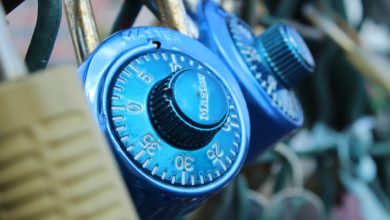What is a Paper Wallet? Is It Still Safe to Use?

- Understanding the concept of a paper wallet
- Pros and cons of using a paper wallet for storing cryptocurrencies
- How to create a secure paper wallet for your digital assets
- Are paper wallets still a viable option in today’s digital world?
- Tips for safely storing and using a paper wallet
- Exploring the risks associated with paper wallets and how to mitigate them
Understanding the concept of a paper wallet
A paper wallet is a form of “cold storage” for cryptocurrencies that involves printing out the public and private keys on a piece of paper. This method is considered to be highly secure since the keys are not stored on a computer or online where they could be vulnerable to hacking. Paper wallets are often used by those who want to keep their cryptocurrency offline and away from potential cyber threats.
When setting up a paper wallet, users generate a new wallet address and corresponding private key. The public key is used to receive funds, while the private key is needed to access and send funds from the wallet. It is crucial to keep the private key secure and hidden, as anyone with access to it can control the funds in the wallet.
One of the main advantages of using a paper wallet is that it provides complete control over the security of the funds. Since the keys are stored offline, they are not susceptible to online attacks. However, it is essential to store the paper wallet in a safe place to prevent loss or damage. Additionally, users should be cautious when generating the keys and ensure that they are created securely to avoid any potential vulnerabilities.
Overall, paper wallets can be a safe and effective way to store cryptocurrencies offline. However, users must take the necessary precautions to protect their keys and ensure the security of their funds. By following best practices for generating and storing paper wallets, individuals can enjoy the benefits of cold storage while minimizing the risks associated with online wallets.
Pros and cons of using a paper wallet for storing cryptocurrencies
There are several advantages and disadvantages to using a paper wallet for storing cryptocurrencies. One of the main benefits is the high level of security it offers. Since the private keys are stored offline on a physical piece of paper, they are not susceptible to hacking or online attacks. This makes paper wallets a popular choice for those who prioritize security.
However, there are also drawbacks to using a paper wallet. One of the main concerns is the risk of physical damage or loss. If the paper wallet is destroyed, damaged, or misplaced, there is no way to recover the funds stored on it. This risk can be mitigated by creating multiple copies of the paper wallet and storing them in secure locations.
Another disadvantage of paper wallets is the lack of convenience when it comes to making transactions. In order to access the funds stored on a paper wallet, the user must manually input the private key into a digital wallet. This process can be cumbersome and time-consuming, especially for those who make frequent transactions.
In conclusion, paper wallets offer a high level of security for storing cryptocurrencies, but they also come with the risk of physical damage or loss and can be inconvenient to use for transactions. It is important for users to weigh the pros and cons carefully before deciding whether to use a paper wallet for their cryptocurrency storage needs.
How to create a secure paper wallet for your digital assets
To create a secure paper wallet for your digital assets, follow these steps:
1. **Download a reliable paper wallet generator**: When creating a paper wallet, it is essential to use a trusted generator to ensure the security of your digital assets. Look for reputable sources with positive reviews from the cryptocurrency community.
2. **Generate your paper wallet offline**: For added security, generate your paper wallet while offline. This minimizes the risk of potential hacking or unauthorized access to your private keys. Keep your computer disconnected from the internet during this process.
3. **Print out your paper wallet**: Once you have generated your paper wallet, print it out on a secure printer. Make sure that the printer is not connected to any network to prevent any potential breaches of security. Consider using a printer that is not shared with any other devices.
4. **Store your paper wallet securely**: After printing out your paper wallet, store it in a safe and secure location. Consider using a fireproof and waterproof safe to protect your paper wallet from any physical damage. Keep it away from prying eyes and potential theft.
5. **Do not share your private key**: Your paper wallet contains both your public and private keys. While you may share your public key with others to receive digital assets, never share your private key. Keep it confidential to prevent unauthorized access to your funds.
By following these steps, you can create a secure paper wallet for your digital assets. Remember to exercise caution and diligence when handling your paper wallet to ensure the safety of your cryptocurrencies.
Are paper wallets still a viable option in today’s digital world?
Paper wallets have been around for a long time and have been a popular choice for storing cryptocurrency due to their offline nature, which provides an extra layer of security. However, in today’s digital world where cyber threats are constantly evolving, some people question whether paper wallets are still a viable option for storing their digital assets.
While paper wallets can still be a safe option for storing cryptocurrency, there are some drawbacks to consider. One of the main concerns is the risk of physical damage or loss of the paper wallet, which could result in the loss of all the funds stored on it. Additionally, paper wallets may not be as convenient as digital wallets, as they require the user to manually input the private key when making a transaction.
Despite these drawbacks, paper wallets can still be a viable option for those looking for an extra level of security for their cryptocurrency. It is important to weigh the pros and cons and decide if a paper wallet aligns with your individual needs and risk tolerance. Ultimately, the choice between a paper wallet and a digital wallet comes down to personal preference and comfort level with the technology.
Tips for safely storing and using a paper wallet
When it comes to safely storing and using a paper wallet, there are a few important tips to keep in mind. Firstly, it is crucial to keep your paper wallet in a secure and protected location. Consider storing it in a safe deposit box or a fireproof safe to prevent any damage or theft. Secondly, be sure to make multiple copies of your paper wallet and store them in different secure locations. This will ensure that you have a backup in case one copy is lost or damaged.
Additionally, when using your paper wallet, be cautious about who you share your private key with. Only share it with trusted individuals or services to prevent unauthorized access to your funds. Furthermore, consider using a passphrase or encryption to add an extra layer of security to your paper wallet.
Lastly, regularly check the condition of your paper wallet to ensure that it is still intact and readable. If you notice any signs of wear or damage, consider transferring your funds to a new paper wallet to prevent any potential loss. By following these tips, you can safely store and use your paper wallet with peace of mind.
Exploring the risks associated with paper wallets and how to mitigate them
When using a paper wallet to store your cryptocurrency, there are several risks that you need to be aware of in order to protect your investment. One of the main risks is the physical vulnerability of a paper wallet. Since it is a physical piece of paper, it can be easily damaged, lost, or stolen.
Another risk is the lack of security features on a paper wallet compared to hardware wallets or digital wallets. Paper wallets do not have encryption or password protection, making them more susceptible to unauthorized access.
To mitigate these risks, there are several steps you can take to ensure the security of your paper wallet. One option is to make multiple copies of your paper wallet and store them in different secure locations. This way, if one copy is lost or damaged, you have backups available.
Additionally, you can laminate your paper wallet to protect it from water damage or other physical threats. Storing your paper wallet in a fireproof safe or a safety deposit box can also provide an extra layer of security.
It is important to keep your paper wallet confidential and avoid sharing it with anyone. Treat it like cash and store it in a safe place where only you have access to it. By taking these precautions, you can minimize the risks associated with paper wallets and protect your cryptocurrency investment.



